| Travel Photos Home Page |
Travel Photos...Spain and Portugal
Lisbon, Part One |
||||
|
To return to the Paintings section of this website, please CLICK HERE
|
|||
| Lisbon has so much to offer that I have decided to split the photos into two parts. The first part deals with the Pombaline District, the Alfama and the Bairro Alto. The second part will show the Belem District in the West, and the Parque Das Nacoes District in the North East of the city. The map below will show the locations of these areas. | |||
 |
|||||
| Wikipedia says: "Lisbon is one of the oldest cities in the world, and the oldest in Western Europe, predating other modern European capitals such as London, Paris and Rome by centuries. Julius Caesar made it a municipium called Felicitas Julia, adding to the name Olissipo. Ruled by a series of Germanic tribes from the 5th century, it was captured by the Moors in the 8th century. In 1147, the Crusaders under Afonso Henriques reconquered the city and since then it has been a major political, economic and cultural centre of Portugal." | On the map above, I have marked four areas in red boxes. The Praca do Comercio is at the heart of Pombaline Lisbon (more about that later). Just to the right of that is the Alfama district. This is the hilly 'Old Town', with Moorish influences. Belem to the West is where one can see the famous Torre de Belem, built in the 16th Century, and other historical attractions. In the North East of Lisbon is the Parque das Nacoes, an area that was revitalised and modernised in the late 20th Century. | ||||
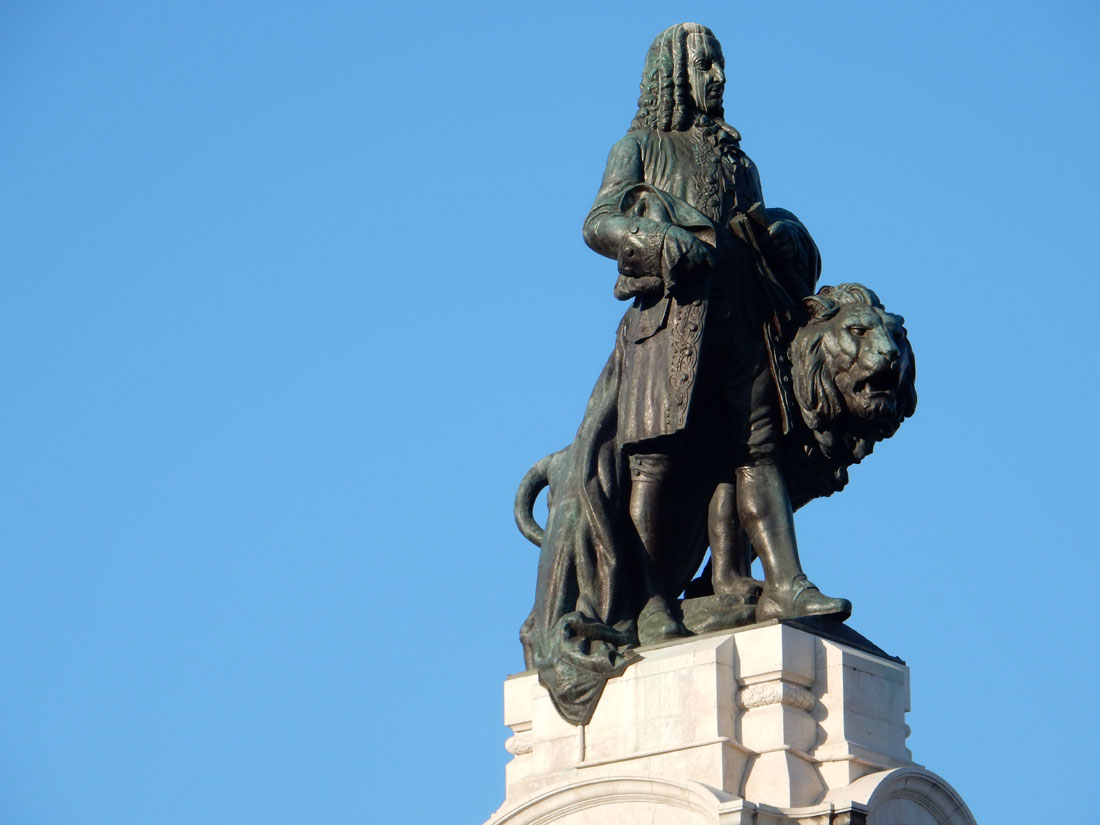 |
|||||
| Just around the corner from my B&B in Lisbon was this monument to the Marquis of Pombal (1699 - 1782), a highly controversial person in Portuguese history. His statue sits atop a giant column in the middle of a large roundabout called the Praca Marques de Pombal.
It is worth recounting some of his story as he had much to do with the very look and feel of much of Lisbon today. He was given his powers and his titles by King Joseph I, and we would now describe him as the Prime Minister of Portugal, although many would prefer to call him a dictator. On Saturday, the 1st of November, 1755, Lisbon was struck by a massive earthquake which devastated the city. Pombal seized the opportunity to rebuild the center of the city. The new city was designed in a grid fashion, making it one of the first cities in Europe to adopt this plan. The architectural style in that part of Lisbon is now called Pombaline. |
Pombal was influenced by the Enlightenment and in 1740 he was elected as a Fellow of the Royal Society. After the eatrhquake, he ensured that the new buildings would be constructed to be earthquake-proof, and he conducted extensive surveys among the inhabitants to discover the effects of the shocks to the earth. Thus, Pombal is often credited with being one of the founders of modern seismology. As a child of the Enlightenment, he was a secularist and he became a great enemy of the Jesuits, finally succeeding in expelling that religious order from Portugal in 1767. Pombal made numerous enemies not only in the Church but also among the aristocracy, with his sweeping reforms of the Portuguese economy, its army and navy, and its educational system. He is also remembered for introducing the first set of regulations to ensure the quality and consistency of port wine exported from Portugal, and soon other wine producing countries, like France, would follow his lead. |
||||
 |
|||
| This is the Rua Augusta, a main artery in the reconstructed city of Lisbon. It runs South all the way to the harbour. It is also a prime setting for the best shops in town. This is the view facing North. It is now a pedestrian zone. | |||
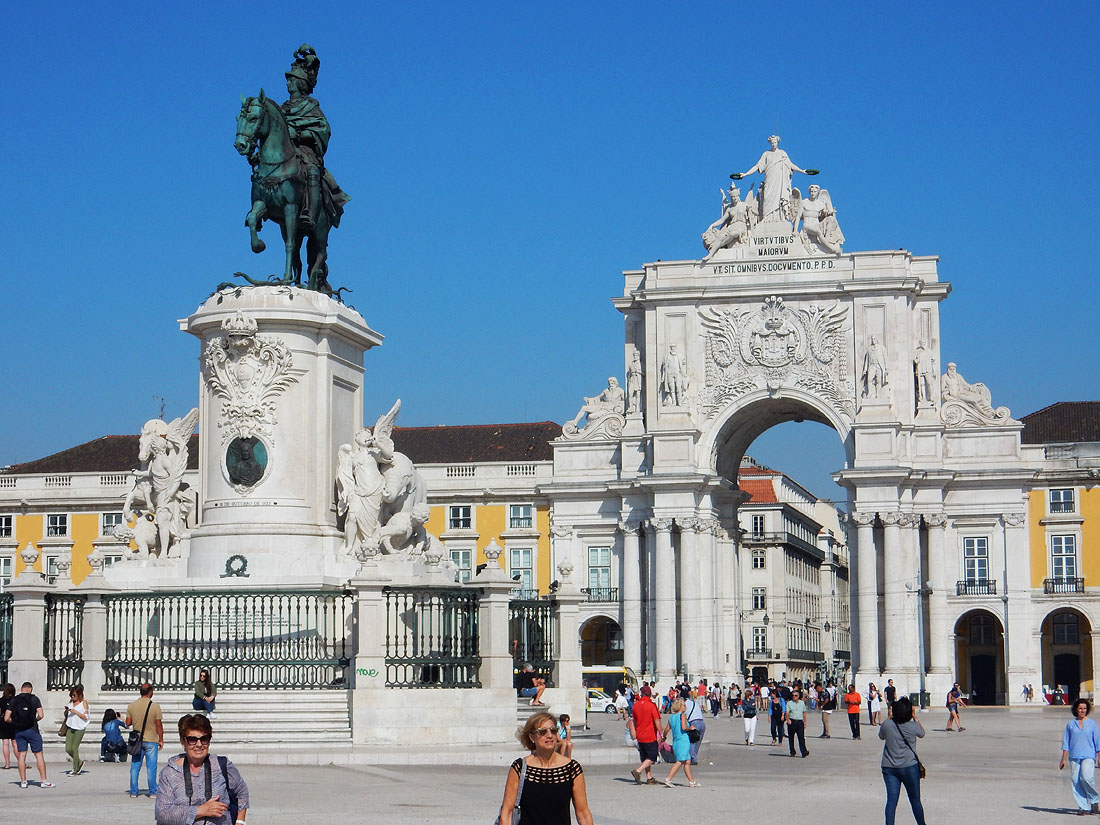 |
|||
| This large square is called the Praca do Comercio. The Royal Palace which stood here before was totally destroyed by the Earthquake of 1755. The statue of the man on his horse is King Joseph 1 who appointed Pombal as his prime minister. The Arch behind the King is named after the Rua Augusta.
This imposing square is right at the edge of the River Tagus. |
|||
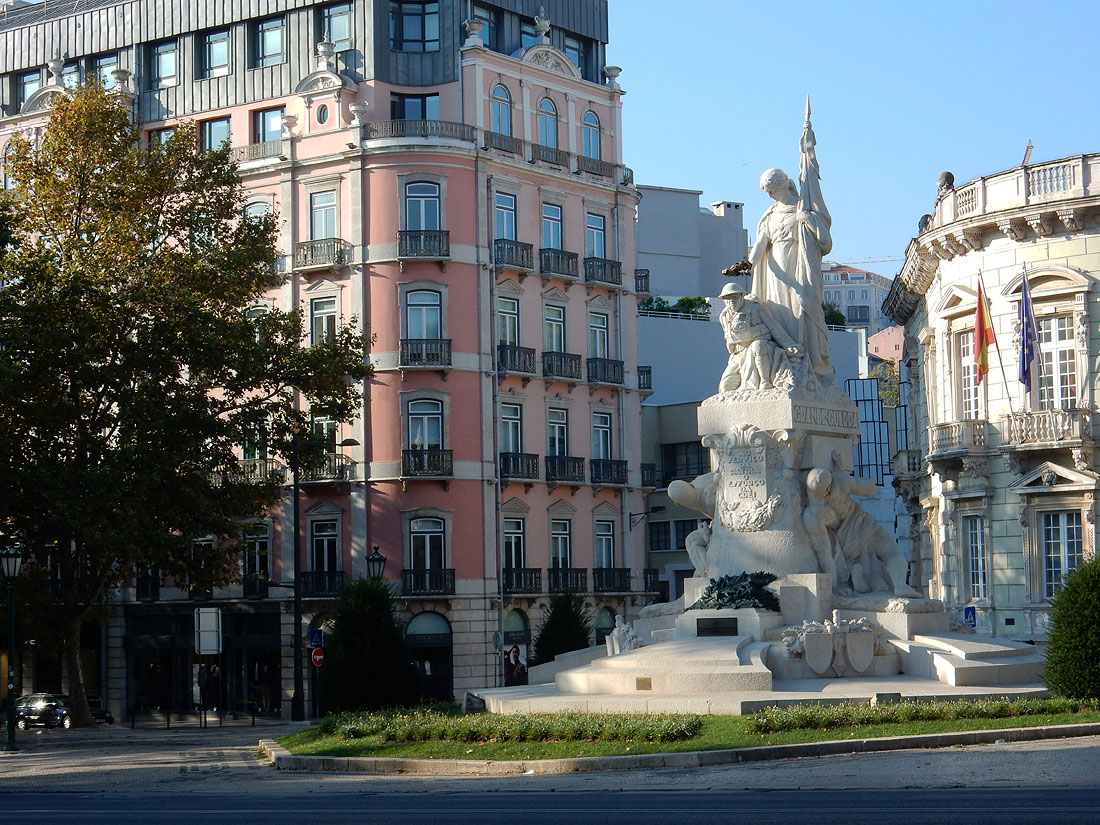 |
|||
| From the site of the statue of the Marquis of Pombal, all the way to the river front alongside the Praca do Comercio, there are many wide boulevardes with trees, handsome apartment buildings, and monuments. As the terrain in this part of the city is quite flat, it is easy and pleasant to stroll through the streets. | |||
 |
|||
| An apartment building on the Avenue da Libertade. | |||
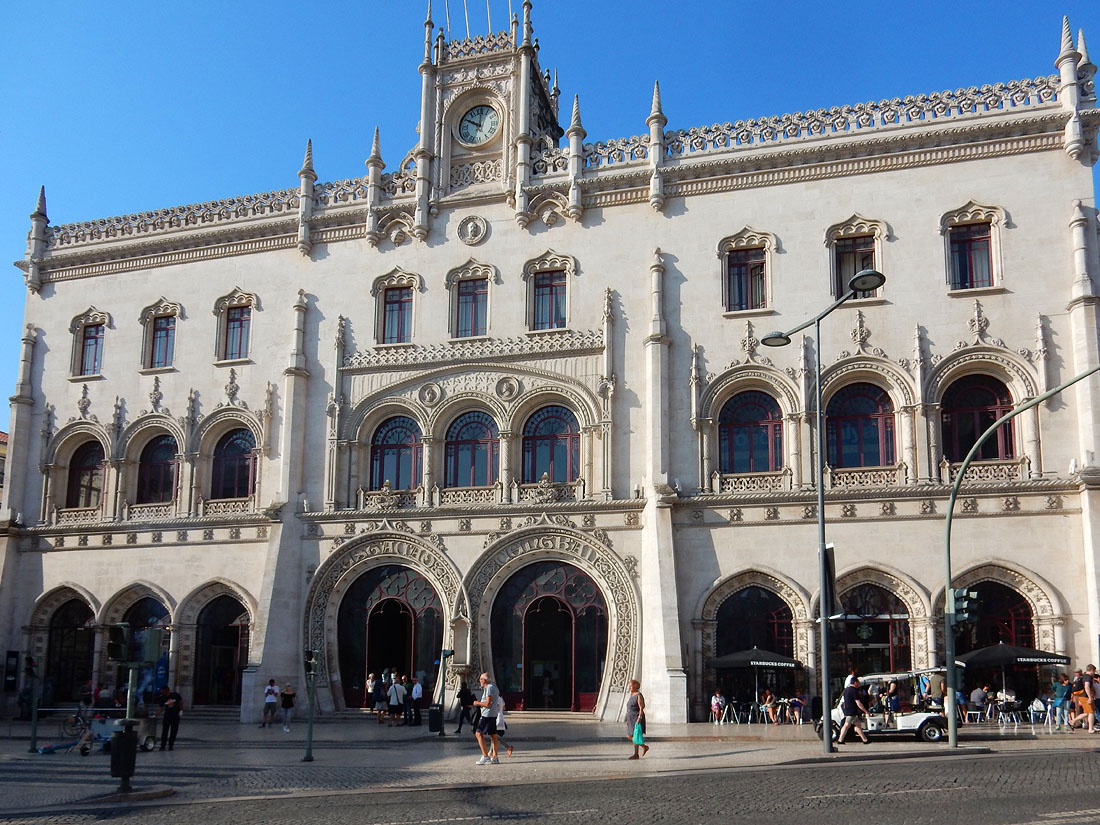 |
|||
| Walking towards the Tagus River and the Arc of Augusta, I came across this building which intrigued me with the design of its doorways. To my surprise, it turned out to be a railway station. I caught the train here a few days later to do a day trip to Sintra. | |||
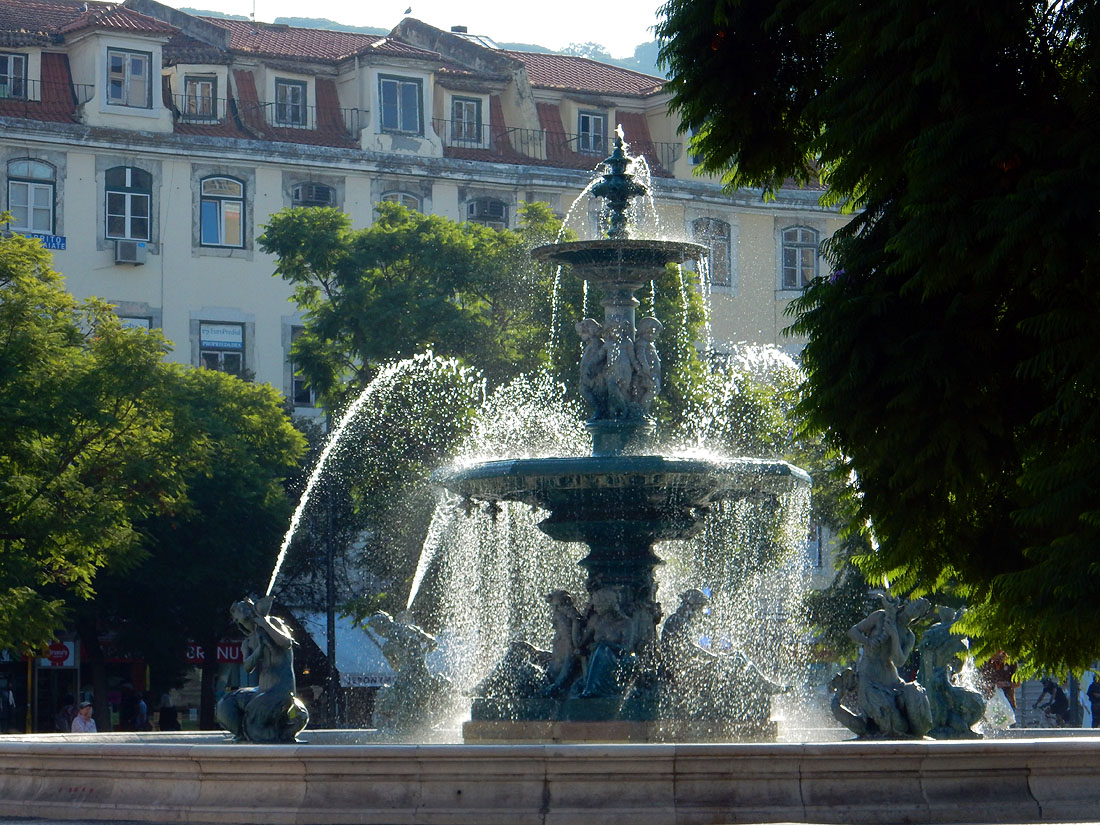 |
|||
| There are lots of little green spaces throughout the Pombaline part of Lisbon. Here a fountain helps to cool the air. | |||
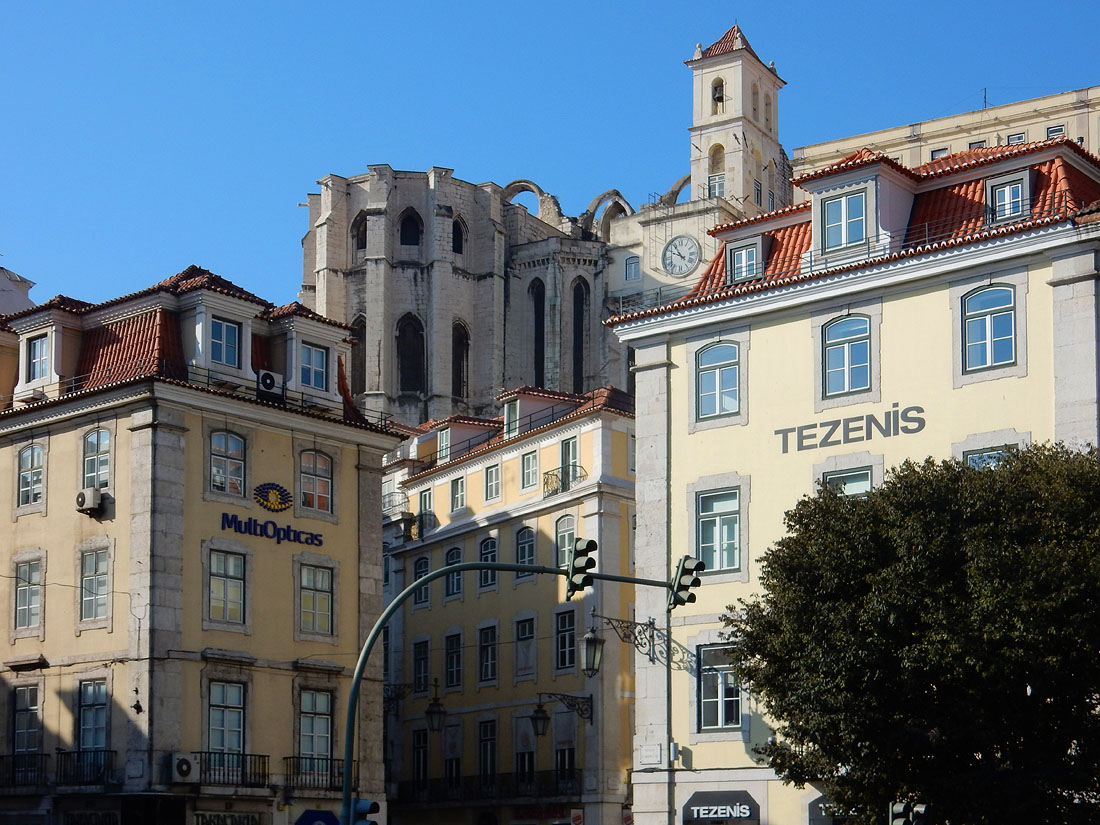 |
|||
| Just as I was getting used to strolling gently along the flat bits of Lisbon, I was confronted by the fact that Lisbon, like many a city and town in Portugal, is built on a large number of hills. Climbing up and down those hills was great cardio exercise!
This is a view looking up towards the Bairro Alto district, just to the West of Pombaline Lisbon. |
|||
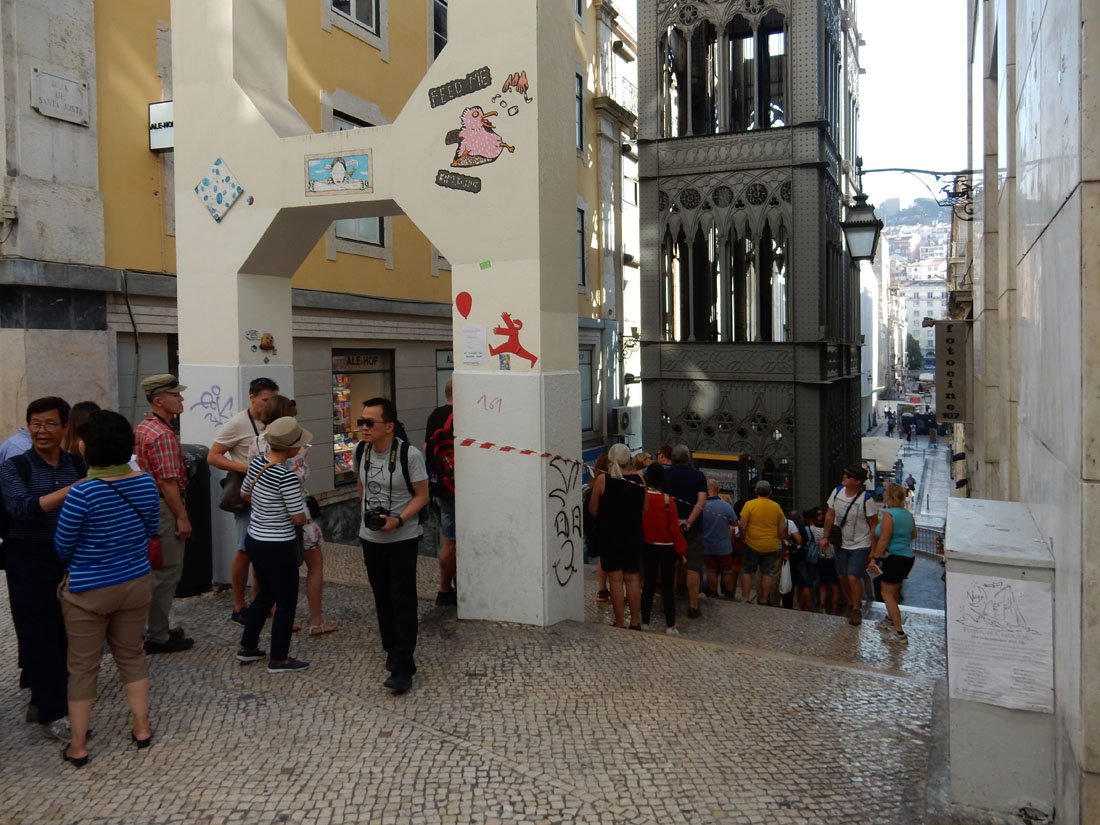 |
|||
| For those who are not too keen to exert themselves climbing up and down the hills of Lisbon, there are several ways to move up in the world mechanically. This is a queue waiting for a lift up to the Bairro Alto district. The lift is called the Ascensor da Gloria. | |||
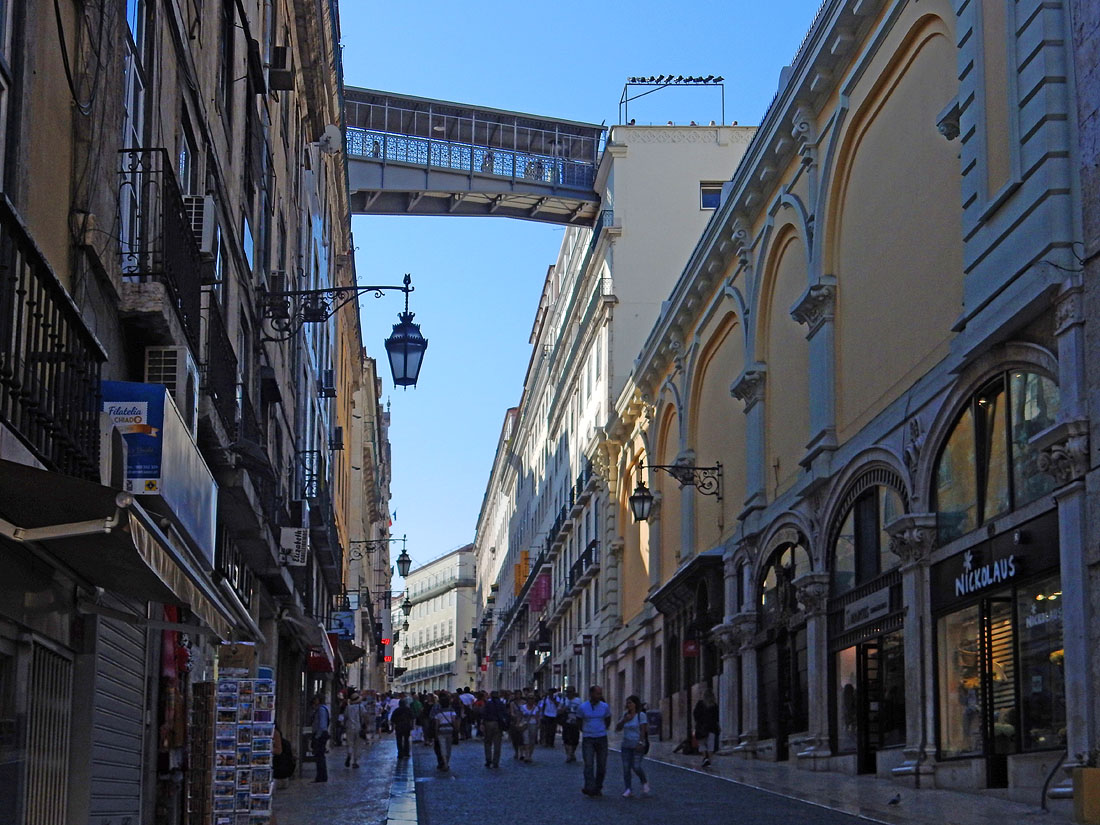 |
|||
| From the top of the Ascensor da Gloria, the lazier tourists can stroll across the skyway to the Bairro Alto. | |||
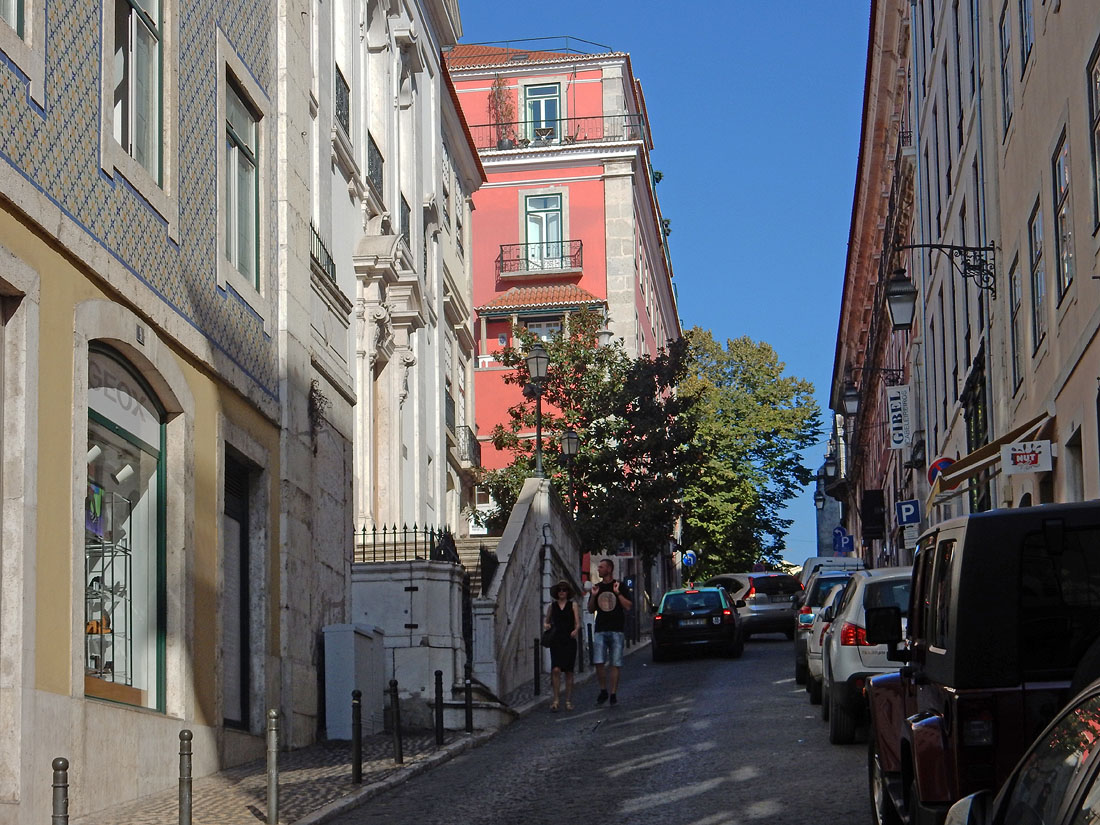 |
|||
| I preferred to walk up this road to the top of the hill. | |||
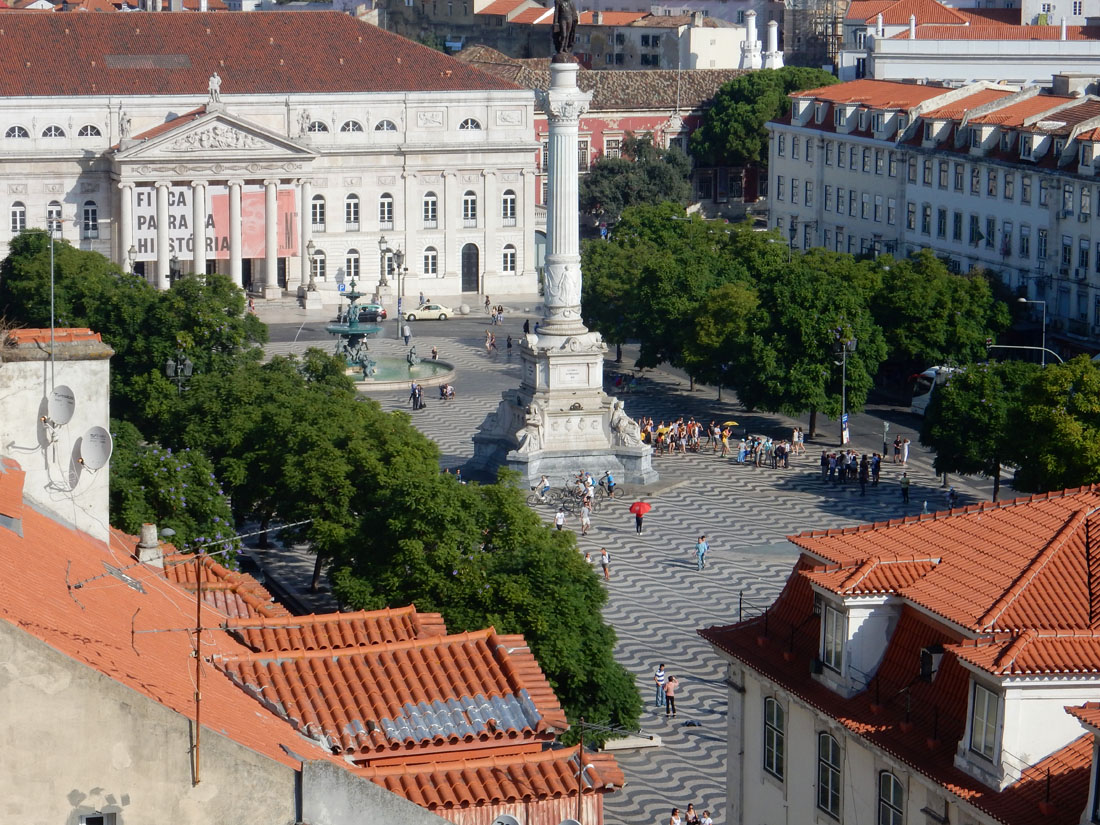 |
|||
| This is a view from the Bairro Alto of Rossio Square, the second largest square in Pombaline Lisbon. Ooops! I have chopped off the head of Pedro IV, who is standing on the top of his column. The crime of Regicide! | |||
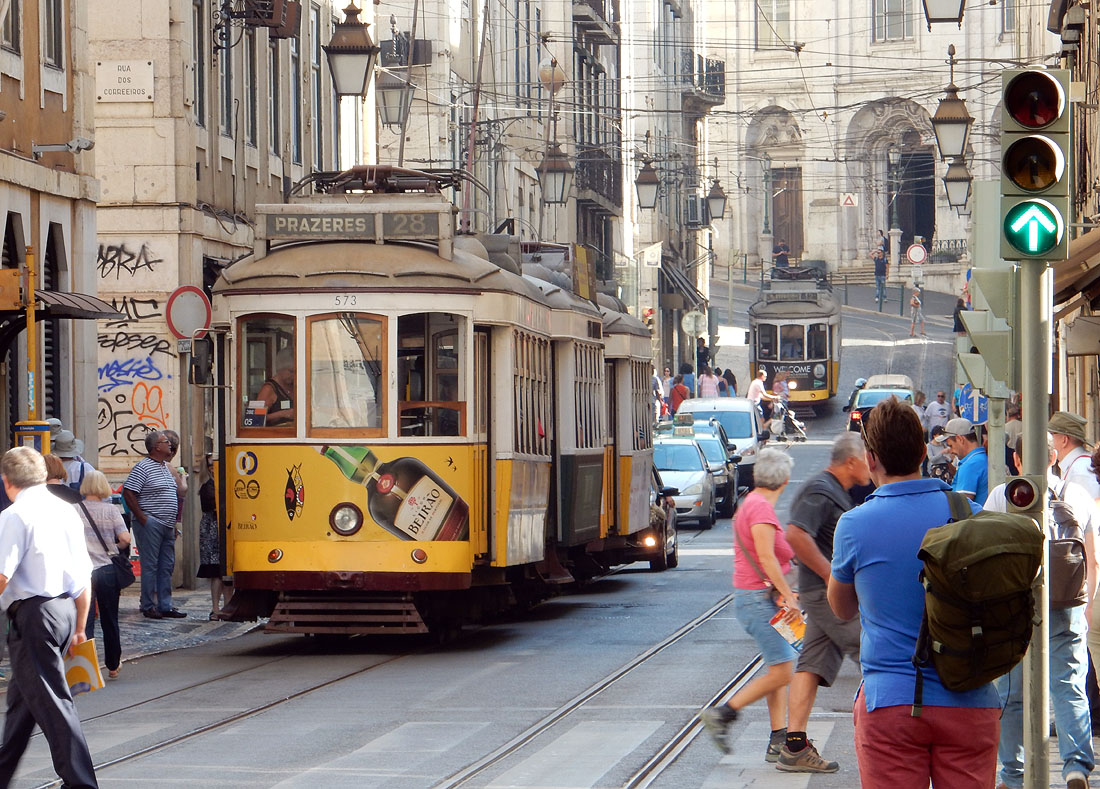 |
|||
| Another way to go uphill is to catch a tram. This one will take you to the Alfama district which is built on a hill. | |||
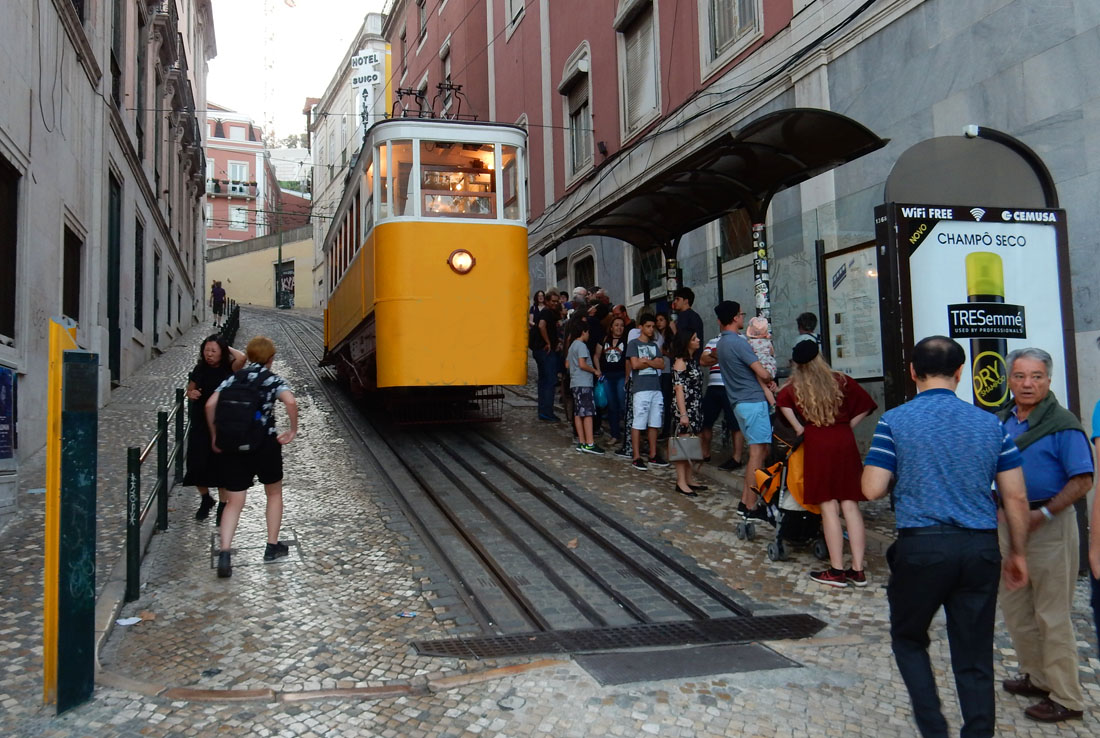 |
|||
| The Funicular Lacra is East of the Avenue da Libertade. | |||
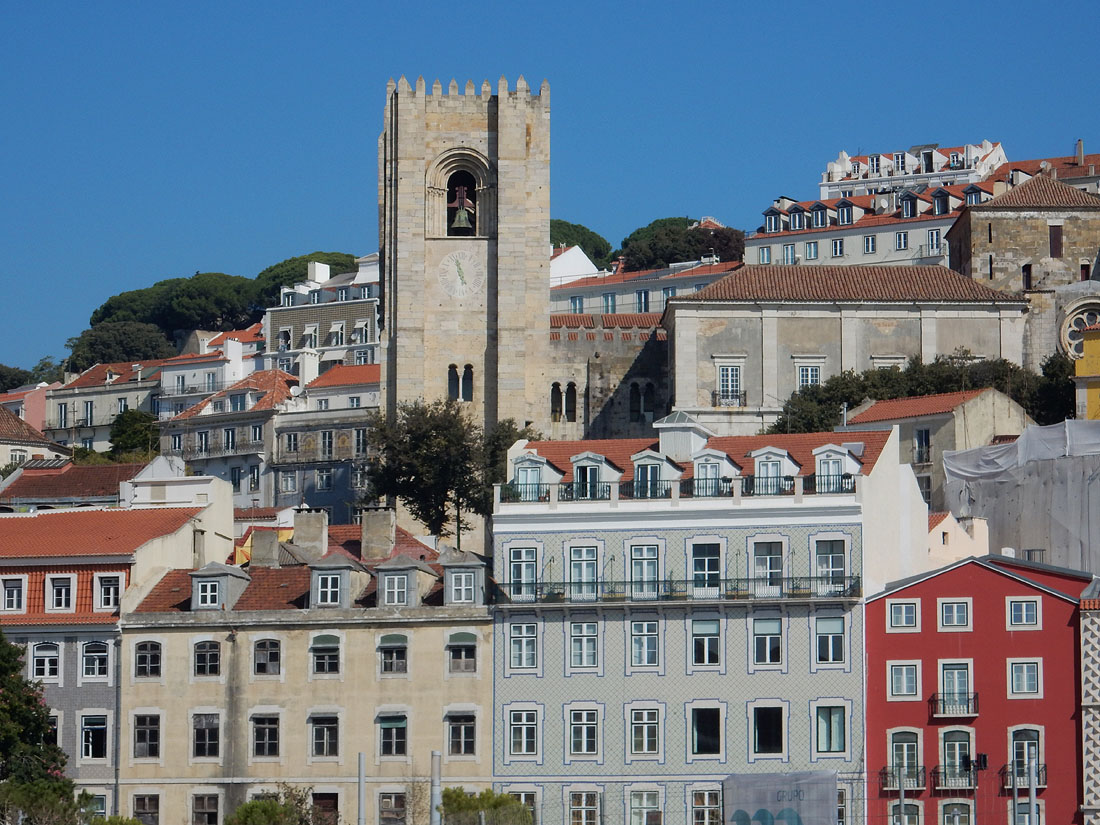 |
|||
| The tower with its bell is part of the Cathedral of Lisbon as viewed from the edge of the Tagus River. The hill we see is in the Alfama District. Here you can often hear the haunting music of Fado. | |||
 |
|||
| This cafe is on a street which lies on the border between the Alfama Hill and the Pombaline district of Lisbon. | |||
 |
|||
| The next few photos were taken as I explored the Alfama. | |||
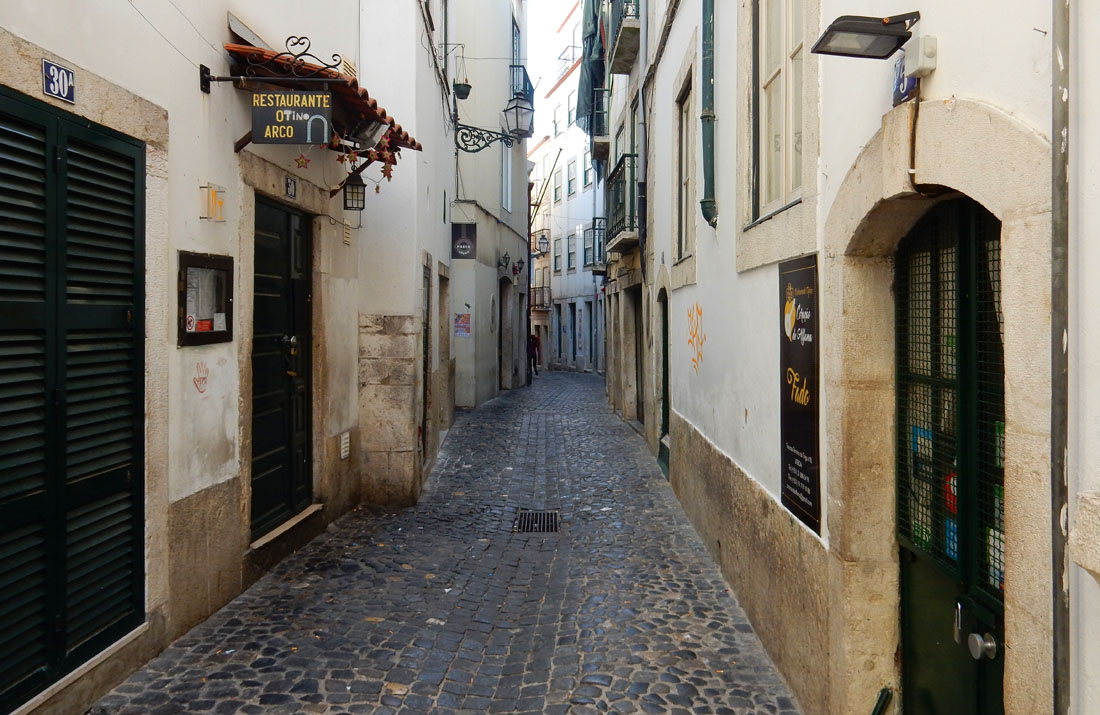 |
|||
| Although many of the buildings had to be reconstructed after the 1755 earthquake, the Alfama retained its narrow twisting street plan inherited from the Moors and the Christian Middle Ages. | |||
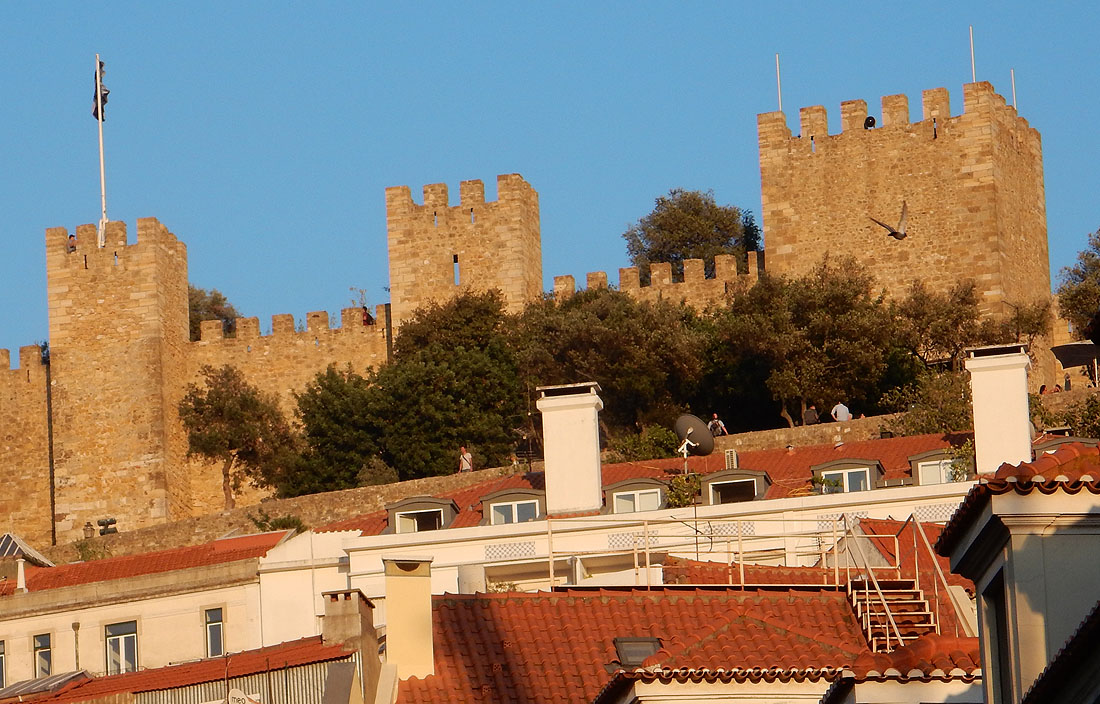 |
|||
| At the top of the Alfama Hill is the Castle called the Miradouro do Castelo de Sao Jorge. | |||
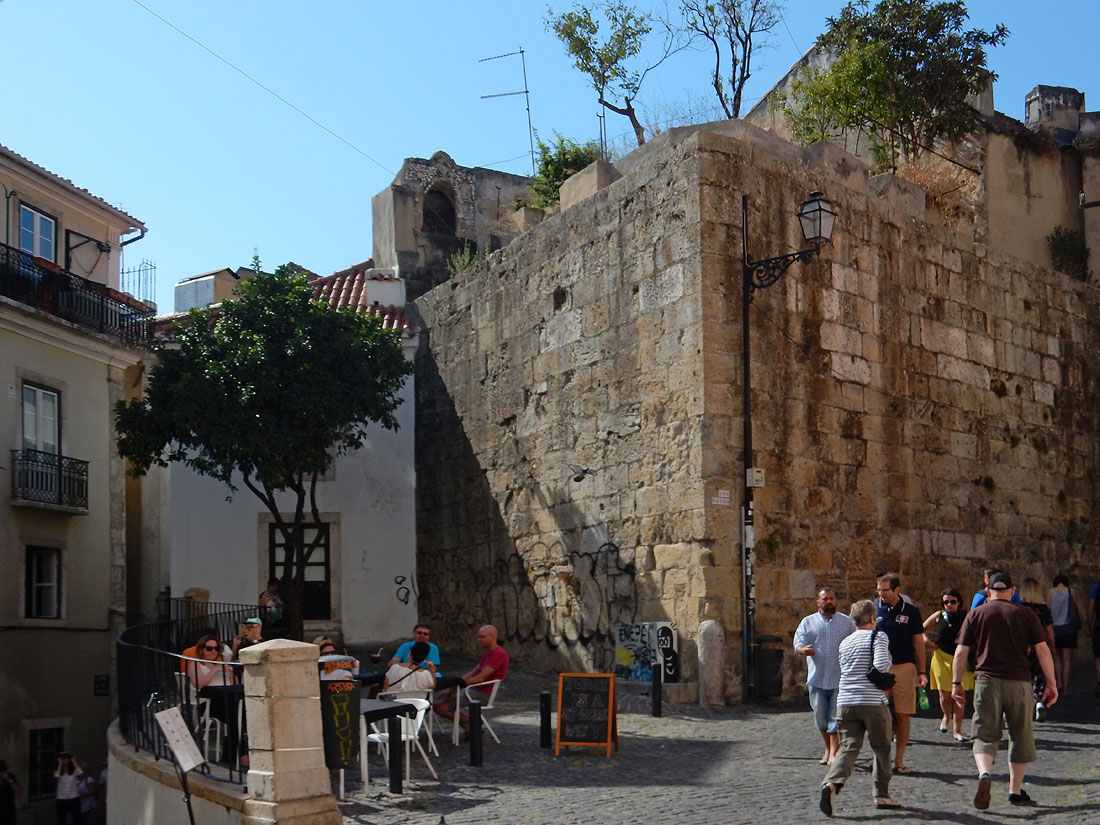 |
||
 |
|||
| A view of the main porch of the Cathedral of Lisbon. | |||
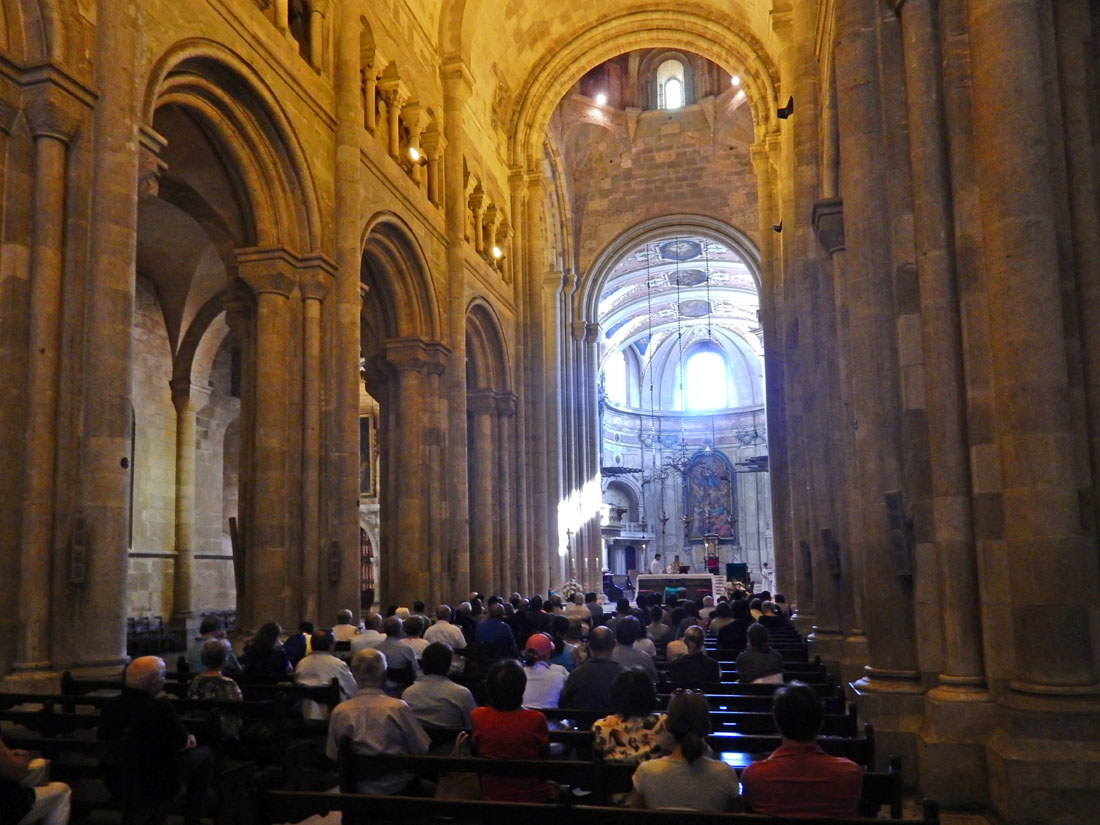 |
|||
| The interior of the Cathedral. | |||
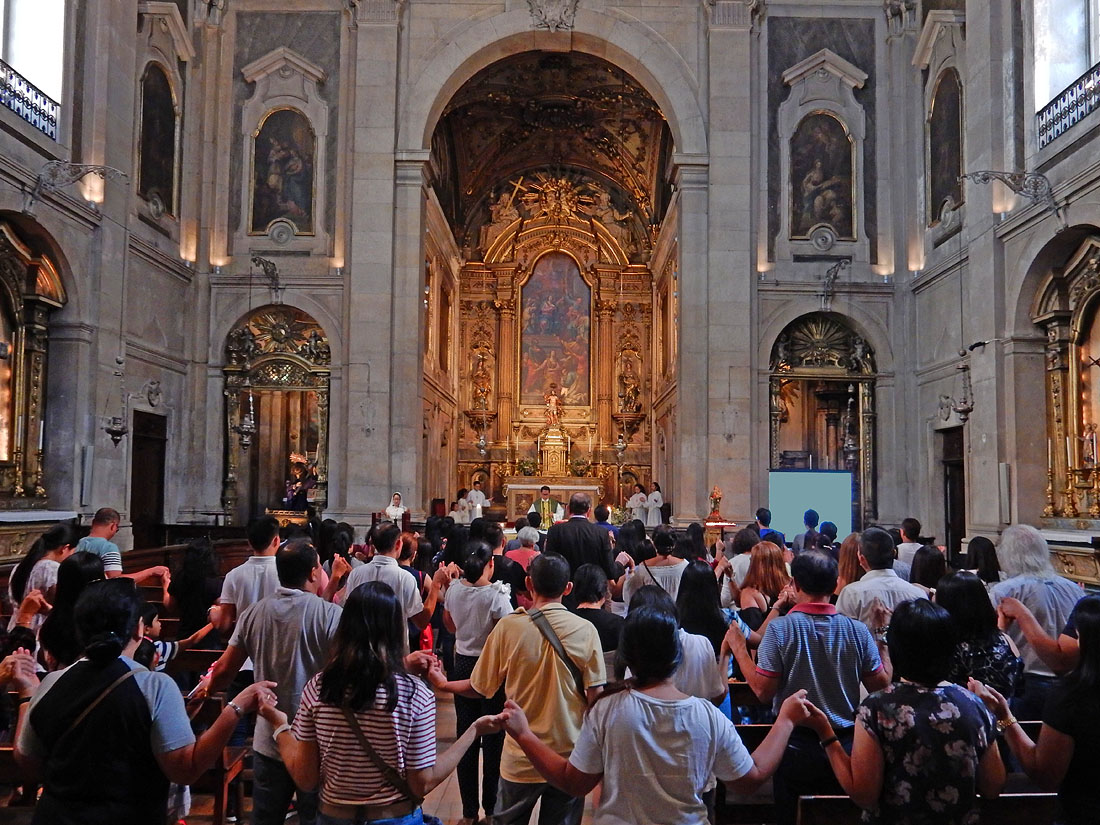 |
|||
| The shot above was taken in the Church of Nossa Senhora Da Conceicao Velha which is close by. There was a special service for these visitors. | |||
 |
|||
| This balcony caught my eye. The Portuguese are famous as tile-makers. | |||
 |
|||
| As the roads in the Alfama district twist and turn, they provide a gentle gradient for the trams to go up and down the hill. | |||
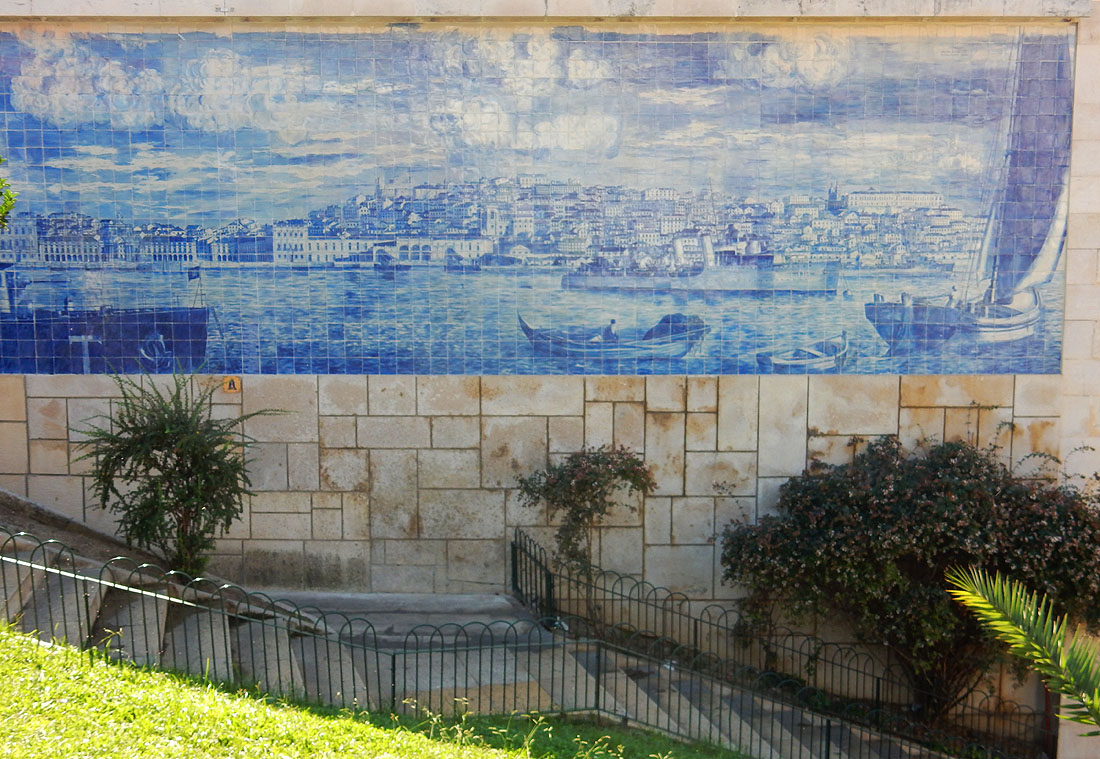 |
|||
| Throughout Portugal, there are numerous large murals made up of painted blue tiles. | |||
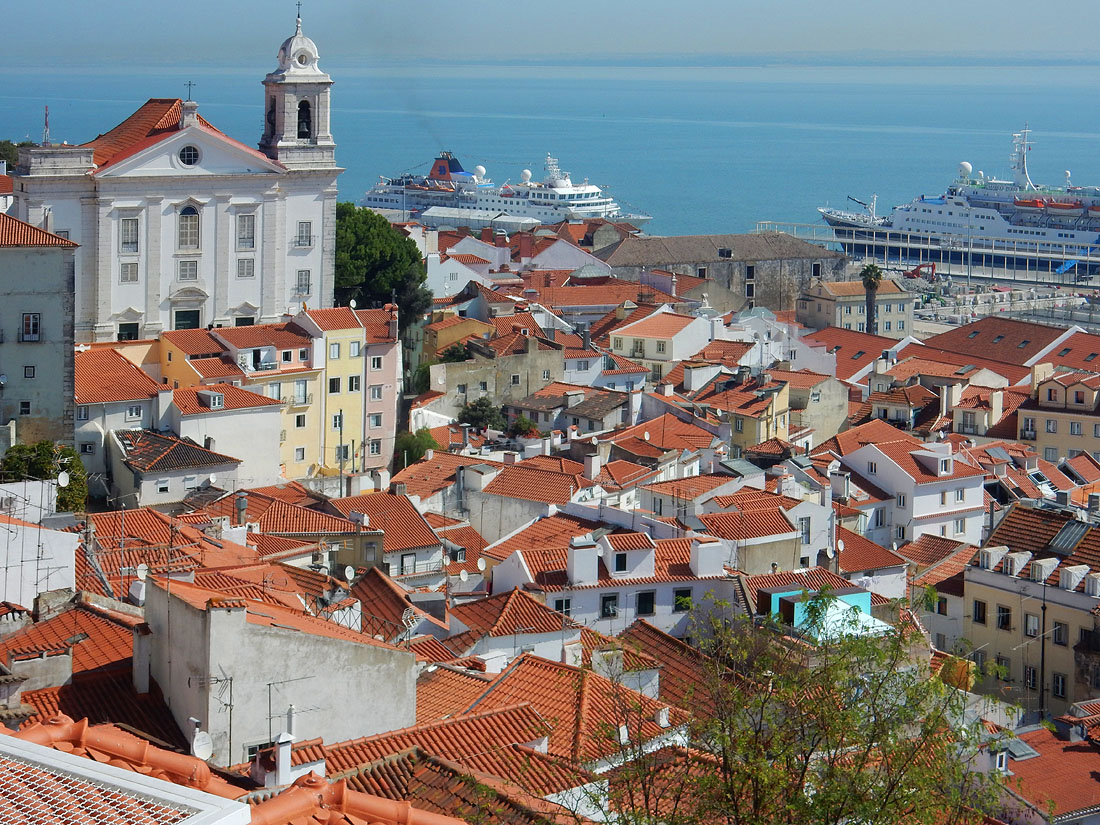 |
|||
| A view of the harbour from halfway up the Alfama. The Tagus River East of Lisbon city upens up into a vast basin which gave the Portuguese a huge natural harbour. This was a great advantage for Portugal especially at the time of Vasco da Gama and the other early explorers. The basin is so large that one cannot even see the far shore. | |||
 |
|||
| The Portuguese are very tolerant of graffiti art. In the Alfama there was a derelict patch that was just taken over by a local graffiti artist who slowly accumulated various found objects into his personal artspace. It has become a tourist attraction. | |||
 |
|||
| And here is a "Portrait of the Artist As A Sleepy Young Man". | |||
|
To return to the Paintings section of this website, please CLICK HERE
|
|||